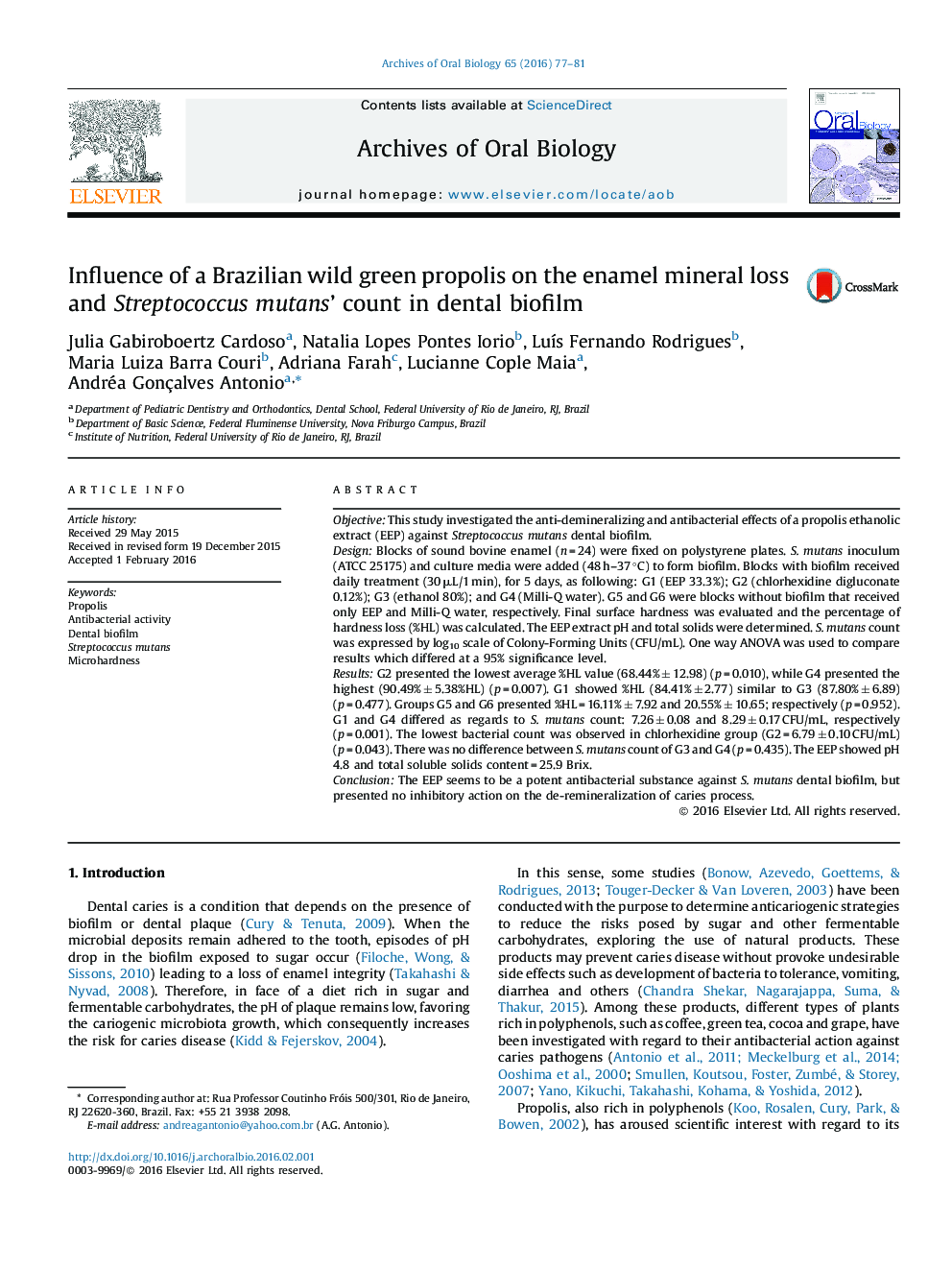| Article ID | Journal | Published Year | Pages | File Type |
|---|---|---|---|---|
| 3120684 | Archives of Oral Biology | 2016 | 5 Pages |
•The inhibitory action of a wild green propolis was tested against a Streptococcusmutans dental biofim.•The tested propolis inhibited the growth of S. mutans biofilm.•The tested propolis showed low level of influence in inhibiting the demineralization of the enamel analyzed.
ObjectiveThis study investigated the anti-demineralizing and antibacterial effects of a propolis ethanolic extract (EEP) against Streptococcus mutans dental biofilm.DesignBlocks of sound bovine enamel (n = 24) were fixed on polystyrene plates. S. mutans inoculum (ATCC 25175) and culture media were added (48 h–37 °C) to form biofilm. Blocks with biofilm received daily treatment (30 μL/1 min), for 5 days, as following: G1 (EEP 33.3%); G2 (chlorhexidine digluconate 0.12%); G3 (ethanol 80%); and G4 (Milli-Q water). G5 and G6 were blocks without biofilm that received only EEP and Milli-Q water, respectively. Final surface hardness was evaluated and the percentage of hardness loss (%HL) was calculated. The EEP extract pH and total solids were determined. S. mutans count was expressed by log10 scale of Colony-Forming Units (CFU/mL). One way ANOVA was used to compare results which differed at a 95% significance level.ResultsG2 presented the lowest average %HL value (68.44% ± 12.98) (p = 0.010), while G4 presented the highest (90.49% ± 5.38%HL) (p = 0.007). G1 showed %HL (84.41% ± 2.77) similar to G3 (87.80% ± 6.89) (p = 0.477). Groups G5 and G6 presented %HL = 16.11% ± 7.92 and 20.55% ± 10.65; respectively (p = 0.952). G1 and G4 differed as regards to S. mutans count: 7.26 ± 0.08 and 8.29 ± 0.17 CFU/mL, respectively (p = 0.001). The lowest bacterial count was observed in chlorhexidine group (G2 = 6.79 ± 0.10 CFU/mL) (p = 0.043). There was no difference between S. mutans count of G3 and G4 (p = 0.435). The EEP showed pH 4.8 and total soluble solids content = 25.9 Brix.ConclusionThe EEP seems to be a potent antibacterial substance against S. mutans dental biofilm, but presented no inhibitory action on the de-remineralization of caries process.
